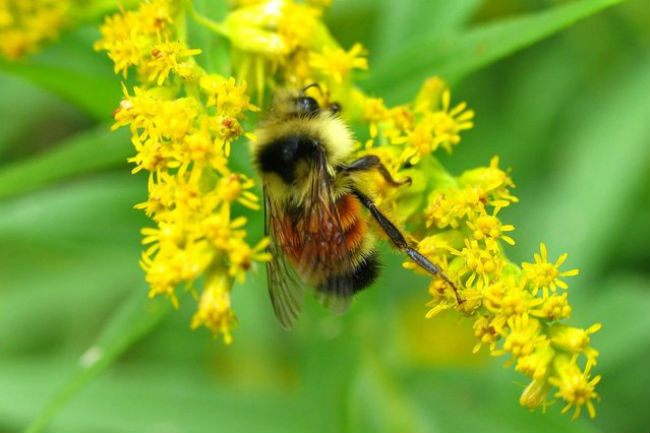Biotech termite pest control is the most important scientific achievement of the 20th century. Due to the successful results of the most lab experiments, the effective bio-methods for wood pest and insect treatment are being currently developed. Biological control strategies are alternatives to chemical treatments.
In fact, pathogenic organisms (viruses, bacteria, Protozoa, nematodes and fungi), have shown little promise for use in biotech termite pest control. Though, research suggests that strains of two endoparasitic fungi (Beauveria bassiana and Metarhizium anisopliae), when applied in baiting systems, may offer the potential for the subterranean termite control. However, their effective use is compromised by some inherent biological limitations and logistical problems. Recent researches presume that natural products (ant semiochemicals and fungal metabolites), or their synthetic analogues, eventually might find a use in termite control programs as repellents or insecticides in wood and soil treatments in case if stable formulations can be developed.[ref]Culliney T.W, Grace J.K Prospects for the biological control of subterranean termites (Isoptera: rhinotermitidae), with special reference to Coptotermes formosanus.[/ref]
How can lytic peptides be used for biotech termite pest control?
Biotech termite pest control is based on the use of genetically modified microorganisms known as the “paratransgenesis”. It is a process when gene products are delivered into a host organism.
The chain of experiments was performed by the US scientists, namely, Culliney T.W, Grace J.K, Hussender C, Donaldson J.R, Foil L.D, Sethi A, Delatte J. and others. They studied the influence of genetically engineered yeast expressing lytic peptides(Melittin, Ligand-Hecate, Cecropin B) on subterranean termite’s gut. For this purpose, the research subject was the Formosan termite worker caste. This type is the most destructive and invasive urban wood pest in the Southeastern regions of the USA and in other warm and humid countries around the world. The Formosan workers are the main food collectors in the colony. Only they have special protozoa and yeast strains in their gut, which help them to digest the main component in Formosan diet – the lingocellulose. Three types of termite gut protozoa are vitally important for the development and survival of the colony.
In the experiments, the researchers have designed baits, which contain a source of cellulose and freeze-dried genetically engineered yeast. These gene yeast start acting as a well-known “Trojan Horse” and secrete protozoacidal lytic peptides such as Melittin, Cecropin B and Hecate. Formosan workers eat the food content in a bait and transfer the yeast to their nest-members throughout the colony via mutual feeding and social interaction. Lytic peptides kill the cellulose digestive protozoa in the termite’s gut and causes the death from starvation and inefficient cellulose digestion.

The great aim was to generate the Trojan-Horse yeast able to survive and multiply in the termite gut in order to spread in the wood pest population. In the studies, the researchers found that the genetically engineered yeast was still kept in a termite gut and multiplied without continuous feeding on the yeast bait. Then the infected Formosans shared the yeast expressing peptides to other colony-mates through mutual feeding and interaction. The transfer of yeast from infected members to recipients was rapid and was studied in two weeks’ time. The termite paratransgenesis system using the yeast fulfills the requirement of Trojan-Horse colonization. [ref]Husseneder C, Grace JK (2005) Genetically engineered termite gut bacteria deliver and spread foreign genes in termite colonies. Appl Microbiol Biotechnol 68: 360–367[/ref]
Melittin from Bee Venom as a lytic peptide against Formosan termites
Melittin is a popular basic natural lytic peptide, the main constituent of the honeybee venom. It contains 26 amino acids. It is a superficially active substance, used in alternative and Eastern medicine as antifungal and antibacterial remedy.

Bait disks were developed for one Formosan colony to examine the effect of baits with Melittin-secreting gene engineered yeast. The lytic peptide from Bee Venom was delivered into the termite worker gut via the yeast in the food bait. The Melittin proved to be fatal to the lab Formosan colony. This substance exterminated the termites via lysis of the gut protozoa and destruction of the gut tissue. The yeast expressing Melittin weakened or even completely destroyed the digestive system within 56 days of exposure. Termites lost all three types of their gut protozoa within three weeks and the lab colony died within two weeks thereafter. [ref]Hussender C, Donaldson J.R, Foil L.D. Genetically Engineered Yeast Expressing a Lytic Peptide from Bee Venom (Melittin) Kills Symbiotic Protozoa in the Gut of Formosan Subterranean Termites[/ref]
Melittin proved to be applied for biotech termite pest control via killing the cellulose-digesting protozoa in the Formosan termite gut. Though, it isn’t likely to be effective and useful as a standalone product to eliminate insects and other pests, which do not rely on symbiotic protozoa for survival.
Ligand-Hecate for destruction of protozoa in the termite gut
The researchers developed a bait containing cellulose and freeze-dried genetically engineered yeast. The yeast expresses a protozoacidal lytic peptide Hecate attached to a protozoa-recognizing ligand. Hecate-Ligand combination kills the termit gut protozoa, which leads to its death. The ligand targets the lytic peptide specifically to protozoa, thereby increasing its protozoacidal efficiency while protecting non-target organisms. After ingestion of the bait, the yeast propagates in the termite’s gut and is transferred throughout the termite colony.
The studies showed that binding of Ligand with Hecate on a VSG-like protein increased protozoacidal activity of the fusion peptide by five-fold over Hecate alone. treated termites died within 2 weeks after the loss of their protozoa. It’s twice faster than the results, obtained from Melittin studies. [ref]Sethi A, Delatte J, Foil L, Husseneder. Protozoacidal Trojan-Horse: Use of a Ligand-Lytic Peptide for Selective Destruction of Symbiotic Protozoa within Termite Guts[/ref]
Paratransgenesis-based strategy is a novel achievement, which is likely to be a good supplement for current biotech termite pest control with the use of fortified biological control agents in addition to chemical insecticides. [ref]Husseneder C, Collier RE (2009) Paratransgenesis for termite control. In Insect Symbiosis, vol. 3., eds Bourtzis K, Miller TA (CRC Press, Boca Raton), pp. 361–376.[/ref]
To sum up all the results of studies, we can conclude that the baits with yeast expressing lytic peptides caused noticeable negative effects in the gut within the first 3-6 days of feeding and resulted in termites’ death. Baiting systems with a lyophilized delivery system can be designed for biotech termite pest control strategy, especially for wood pests, whose life and survival depend on cellulose-digesting protozoa. Lytic peptide concentrations less than 1 µM are enough to kill termite gut protozoa. Termite bait with a living agent, expressing a continuous source of effector molecule into the termite colony is a target-specific, functional, effective and eco-friendly strategy. It is a biotech bait of the future!
Leave a Reply